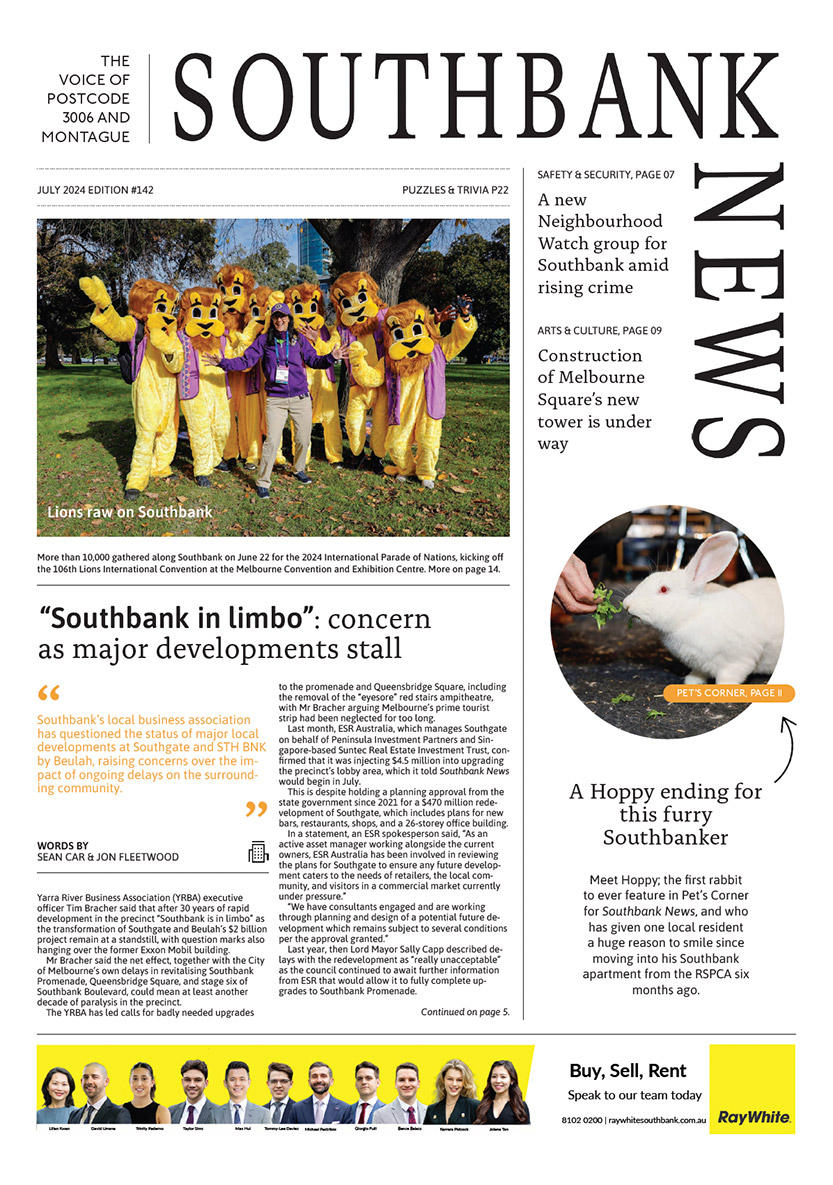Marble in Melbourne
One of Melbourne’s classic interwar buildings is the Manchester Unity, which still dominates the corner of Collins and Swanston streets. Designed in 1932 for a major commercial organisation, it combines commercial gothic and Art Deco styling.
On the ground floor is a shopping arcade, distinguished by a series of friezes, as well as the first escalator in Melbourne which displays more friezes as shoppers arise to the upper floor (now enclosed).
The figures in the friezes were in severe black and white flat-relief carving on marble. They were all finished in a Greco-Roman style and the male figures were nude (with strategically placed fig leaves) and depicted such items as a loan for a home, education, rendering public service, strength, social, self-dependence, tending the sick and defending widows and orphans.
The frieze “financial security”, shown here, depicts golden coins cascading generously from the Horn of Plenty.
The building contained 125 tons of marble, and some of the blocks, weighing seven tonnes each, were hoisted by compressed air cranes - a massive job at the time.
This specialist task was carried out by the firm of Wm Train of Sturt St, experts in marble, slate, granite and stone from Australian quarries.
Train had relocated from Adelaide in 1889 and set up business in Moray St and City Rd, but then moved to Sturt St as demand for building materials increased in a booming Melbourne.
Sturt Street, near the military reserve, was very primitive at the time, not long since it had been a swamp that consisted of a corduroy (or logs) road, similar to a plank road (or raised wooden pathway).
Train developed various marble granite, slate deposits, used on many of the fine public and private buildings in Australian capital cities, New Zealand, London, and China. Train relocated to Footscray in 1938 but left behind a great legacy of commercial, humanitarian and industrial works from his premises in Southbank.
“Meet you at the M.U corner at quarter to eight”, became a catchcry for shoppers and friends in Melbourne. •
Robin Grow is the president of the Australian Art Deco & Modernism Society.

A new Neighbourhood Watch group for Southbank







 Download the Latest Edition
Download the Latest Edition